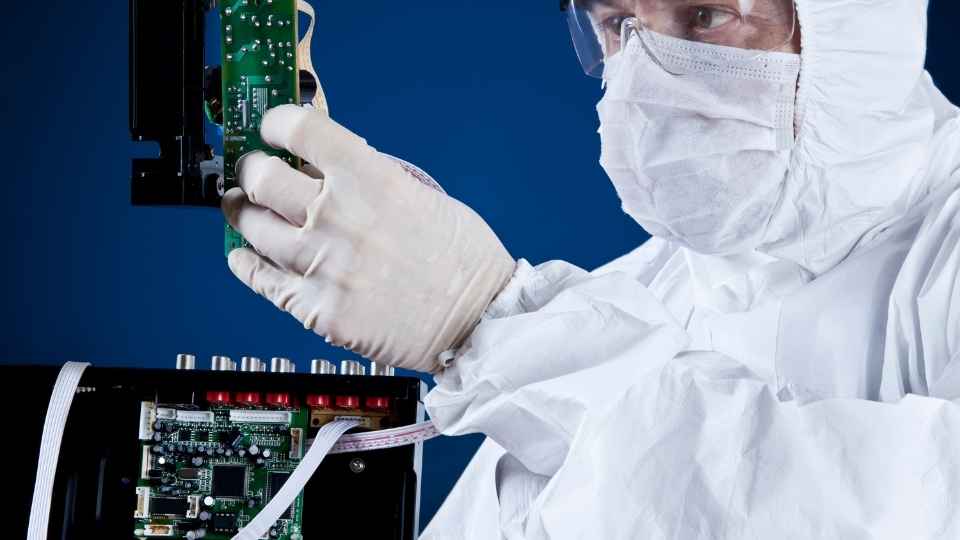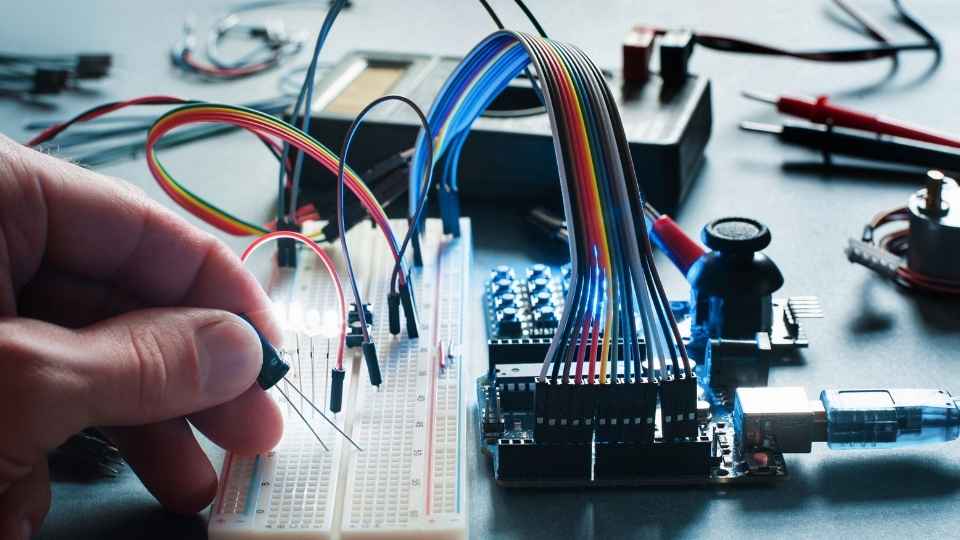
Are you confident that your microcontroller is up to date and secure?
In today's rapidly evolving technological landscape, firmware updates play a crucial role in ensuring the optimal performance and safety of microcontrollers.
But how can you effectively manage these updates while maintaining security?
This article delves into the intricacies of firmware updates, exploring over-the-air (OTA) capabilities, the role of bootloaders, version control practices, and best measures for firmware security.
Join us as we uncover strategies for continuous monitoring and updating to keep your microcontroller current and protected.
Key Takeaways
- Firmware updates are essential for optimal functionality and security of microcontrollers.
- Over-the-Air (OTA) updates provide convenience, efficiency, and security for remotely updating firmware.
- Bootloaders play a crucial role in facilitating safe and reliable firmware installation, enabling OTA updates, and enhancing microcontroller security.
- Version control, particularly with Git, ensures seamless integration, efficient collaboration, and the ability to revert to previous versions when needed.
Understanding the Importance of Firmware Updates
Firmware updates play a crucial role in ensuring the optimal functionality and security of microcontrollers. These updates refer to the software that is embedded within the microcontroller's hardware, controlling its operations and functions. As technology evolves rapidly, firmware updates are essential for keeping up with the latest advancements, bug fixes, and security patches.
By regularly updating the firmware of a microcontroller, users can unlock new features, improve performance, and address any vulnerabilities or weaknesses that may have been identified since its initial release. Firmware updates also enable manufacturers to fine-tune their products based on user feedback and evolving industry standards.

Moreover, keeping your microcontroller's firmware up to date is vital for maintaining cybersecurity. Hackers often exploit vulnerabilities in outdated firmware versions to gain unauthorized access or control over devices. Regularly applying firmware updates ensures that potential security flaws are addressed promptly, protecting sensitive data and preventing unauthorized access.
Exploring Over-the-Air (OTA) Updates
Implementing Over-the-Air (OTA) updates is a crucial aspect to maintaining the latest version of software on your microcontroller, while also enhancing its security. OTA updates allow you to remotely update the firmware of your microcontroller without physically connecting it to a computer or manually flashing new code.
This convenient and efficient method offers several benefits:
Convenience: OTA updates eliminate the need for physical access to the microcontroller, allowing for seamless updates from any location.
Efficiency: By sending only the necessary code changes instead of the entire firmware, OTA updates minimize data usage and reduce download times.
Security: OTA updates can include security patches and bug fixes, ensuring that your microcontroller remains protected against vulnerabilities.
Transitioning into the subsequent section about 'the role of bootloaders in keeping your microcontroller current', understanding how OTA updates work will provide valuable context for exploring bootloaders' importance in this process.

The Role of Bootloaders in Keeping Your Microcontroller Current
To maintain the latest version of software on a microcontroller and enhance its security, it is crucial to understand the role of bootloaders in facilitating seamless updates.
A bootloader is a piece of code that runs when a microcontroller powers up or resets. Its primary function is to load and initialize the operating system or application firmware.
Bootloaders are essential for updating firmware because they provide a safe and reliable mechanism to install new versions without risking the integrity of the device. They enable features such as over-the-air (OTA) updates, allowing users to wirelessly update their devices over an internet connection.
Version Control: Managing Firmware Updates Efficiently
Version control is a crucial aspect of managing firmware updates efficiently.
By utilizing Git for firmware updates, developers can track changes made to the code and easily revert back to previous versions if necessary.
Additionally, implementing effective branching strategies and following version control best practices ensures that firmware updates are organized, well-documented, and seamlessly integrated into the development process.
Git for Firmware Updates
Utilizing Git for firmware updates enhances the efficiency and traceability of microcontroller maintenance. With Git, developers can easily track changes made to the firmware codebase, collaborate with team members, and roll back to previous versions if needed.

Here are three key benefits of using Git for firmware updates:
Version control: Git provides a comprehensive version control system that allows developers to manage different versions of their firmware codebase. This ensures that all changes are properly documented and can be easily traced back if any issues arise.
Collaboration: Git enables seamless collaboration among multiple developers working on the same firmware project. It allows them to work on different branches, merge their changes, and resolve conflicts efficiently.
Rollback capability: In case a new firmware update introduces unexpected bugs or issues, Git's ability to revert to previous versions makes it easy to roll back and restore a stable state.
Branching Strategies for Firmware
Implementing effective branching strategies is crucial for managing firmware development, allowing developers to streamline collaboration and ensure efficient code integration. Branching in firmware development refers to creating separate lines of code that can be developed independently from the main codebase. This enables teams to work on different features or bug fixes simultaneously, without interfering with each other's progress. By using branches, developers have the freedom to experiment and make changes without affecting the stability of the main codebase.
There are several popular branching strategies used in firmware development, including feature branching, release branching, and hotfix branching. Feature branches allow developers to work on new features in isolation before merging them back into the main branch. Release branches are created when preparing for a software release, ensuring that any last-minute bug fixes can be easily managed without disrupting ongoing feature development. Hotfix branches are used to quickly address critical issues in production firmware.
Choosing the right branching strategy depends on factors such as project complexity, team size, and release schedule. By adopting an effective branching strategy, firmware developers can maintain code quality, facilitate collaboration among team members, and ultimately deliver stable and secure microcontroller firmware updates.

Version Control Best Practices
A structured approach to version control is essential in software development, allowing teams to effectively manage code changes and track the evolution of their projects. Here are three best practices for version control:
Use a centralized repository: By centralizing code in a repository, everyone on the team can access the latest versions, collaborate efficiently, and avoid conflicts.
Utilize branching: Branching enables developers to work on different features or bug fixes simultaneously without affecting the main codebase. It allows for experimentation and isolation of changes before merging them into the main branch.
Implement code review processes: Code reviews ensure that changes adhere to coding standards, improve code quality, and minimize bugs or vulnerabilities.
Ensuring Firmware Security: Best Practices and Measures
To achieve robust firmware security, it is crucial to establish and adhere to best practices and measures.
Firmware security encompasses the protection of microcontroller-based systems from unauthorized access, tampering, and exploitation.
One important measure is ensuring that firmware updates are delivered securely and verified before installation. This can be achieved through code signing and encryption techniques that ensure the integrity and authenticity of the firmware image.

Additionally, implementing secure boot mechanisms can prevent unauthorized or malicious firmware from running on the microcontroller.
It is also essential to regularly update the firmware with patches and bug fixes provided by the manufacturer or vendor.
Adhering to these best practices will help maintain a current and secure firmware environment, providing peace of mind for those who desire freedom in their technological choices.
Bug fixes play a crucial role in resolving issues and enhancing the performance of microcontrollers. By identifying and rectifying software bugs, developers can optimize the functioning of these devices, ensuring their smooth operation and stability.
Additionally, bug fixes enable troubleshooting techniques that aid in diagnosing and addressing any potential problems that may arise during the microcontroller's lifecycle.
By implementing efficient coding techniques, developers can maximize the performance of their microcontrollers and achieve optimal results. Here are three key strategies to optimize microcontroller performance:
Utilizing low-power modes: By utilizing low-power modes such as sleep or standby, developers can reduce power consumption and extend battery life in applications where energy efficiency is crucial.

Optimizing memory usage: Careful management of memory resources is essential for efficient microcontroller operation. This includes minimizing stack usage, optimizing data structures, and using appropriate programming techniques to avoid memory leaks.
Fine-tuning interrupt handling: Interrupts play a critical role in microcontroller operation. Developers should prioritize interrupts based on their importance and minimize the time spent in interrupt service routines to ensure timely response to critical events.
Implementing these strategies will not only enhance the performance of microcontrollers but also contribute to more reliable and efficient embedded systems.
Debugging and Troubleshooting Techniques
When faced with debugging and troubleshooting challenges, developers can employ various techniques to identify and resolve issues in their microcontroller-based systems.
These techniques include using debuggers, such as JTAG or SWD interfaces, which allow developers to step through their code line by line and examine the values of variables and registers in real-time.
Additionally, developers can use logging and error handling mechanisms to capture and analyze system behavior during runtime. By strategically placing log statements throughout the codebase, developers can gain insights into the execution flow and pinpoint potential problem areas.
Moreover, leveraging hardware features like on-chip oscillators or voltage monitors can help diagnose issues related to clock stability or power supply irregularities.

Overall, these debugging and troubleshooting techniques empower developers with the freedom to efficiently identify and resolve issues in their microcontroller-based systems.
Staying Ahead: Strategies for Continuous Monitoring and Updating
To effectively stay ahead in today's rapidly evolving technological landscape, implementing continuous monitoring and updating strategies is crucial for ensuring the security and up-to-dateness of your microcontroller's firmware. With new vulnerabilities being discovered regularly and hackers constantly seeking to exploit them, it is essential to have a proactive approach to firmware updates.
Here are three strategies that can help you stay ahead:
Automated Monitoring: Utilize automated tools and systems that continuously monitor for new firmware releases, security patches, and vulnerability disclosures.
Regular Patching: Establish a schedule for regular patching of your microcontroller's firmware based on the severity of vulnerabilities or the availability of updates.
Threat Intelligence: Stay informed about emerging threats and industry trends by subscribing to threat intelligence services or joining relevant communities.
Frequently Asked Questions
What Are the Potential Risks of Not Regularly Updating Firmware on a Microcontroller?
Not regularly updating firmware on a microcontroller can result in potential risks such as security vulnerabilities, compatibility issues with new software, performance degradation, and inability to take advantage of new features and optimizations.

Firmware updates can be performed remotely or require physical access to the microcontroller. The method depends on the specific system and its capabilities. Is it possible for a microcontroller to receive firmware updates wirelessly?
Firmware updates should be performed regularly to ensure optimal performance and security. The frequency of updates depends on factors like the complexity of the microcontroller's functions and the level of vulnerability to potential threats.
Are There Any Specific Protocols or Standards That Need to Be Followed When Implementing Firmware Updates?
When implementing firmware updates, it is crucial to follow specific protocols and standards to ensure a secure and successful process. Adhering to industry best practices guarantees the integrity and reliability of your microcontroller's software.
What Are Some Common Challenges or Pitfalls to Be Aware of When Updating Firmware on a Microcontroller?
Some common challenges and pitfalls to be aware of when updating firmware on a microcontroller include compatibility issues, security vulnerabilities, data corruption, and the potential for bricking the device. It is crucial to carefully plan and test firmware updates to mitigate these risks.
 Basic Electronics ConceptsEssential ToolsCircuit Design BasicsMicrocontrollersDIY Electronics ProjectsRoboticsPrivacy PolicyTerms And Conditions
Basic Electronics ConceptsEssential ToolsCircuit Design BasicsMicrocontrollersDIY Electronics ProjectsRoboticsPrivacy PolicyTerms And Conditions
